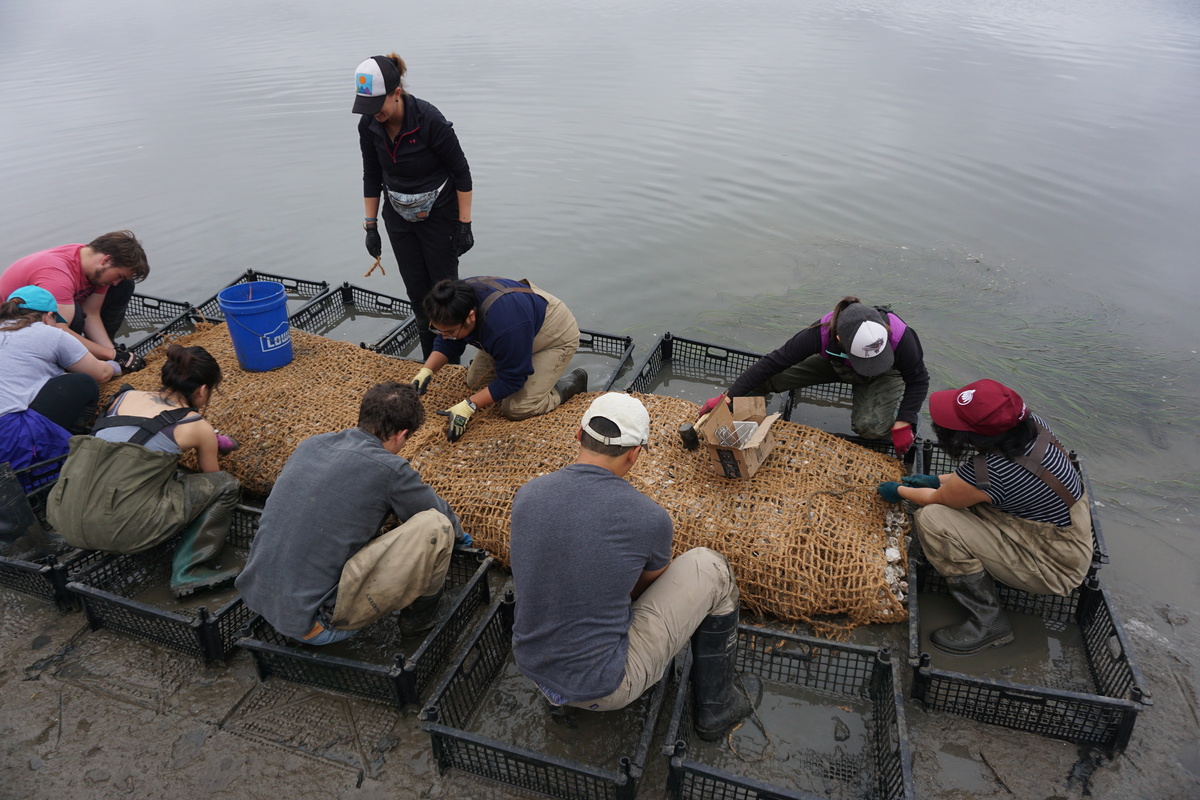News
From Coastal Dunes to Kelp Farms, Honda Marine Science Foundation Supports New Conservation Projects across America

On a mission to preserve coastal areas for future generations, Honda Marine Science Foundation announced its support of five research projects that implement living shoreline approaches to protect coastal habitat threatened by climate change. Grant recipients for 2020 are California Sea Grant, North Carolina Coastal Federation, Oikonos Ecosystem Knowledge, Orange County Coastkeeper, and The Nature Conservancy. Honda Marine Science Foundation annually awards up to $400,000 in grant funds to conservation organizations.
Living shorelines are natural approaches to protecting coastal habitats and surrounding communities while promoting harmonious interaction between humans and the ocean. In addition to increasing coastal resilience, living shorelines improve water quality, provide habitat for marine species, and help to protect against erosion.
“Honda Marine Science Foundation is committed to advancing bold new approaches to protect our coastal areas from the threat of climate change,” said Raminta Jautokas, Honda Marine Science Foundation board member. “Our 2020 grant recipients are pioneering coastal preservation techniques that are showing great promise in efforts to restore our most vulnerable marine habitats.”
2020 Honda Marine Science Foundation Grant Recipients
During the grant funding period, Honda Marine Science Foundation works closely with organizations to support the progress of their research projects. Here is a brief look at each of the five projects:
- Dune Restoration Guidebook for Pillar Point Living Shoreline: California Sea Grant is launching a project to help California communities implement dune restoration as a method to increase coastal resilience. Led by Sea Grant extension specialists at Scripps Institution of Oceanography at the University of California San Diego, the project will develop a best practice guidebook to inform the monitoring and maintenance strategy of the upcoming Pillar Point West Trail Living Shoreline Project in San Mateo County. Coastaldunes were historically a consistent feature of many California shorelines. However, most have been degraded due to development and beach modifications. By restoring or enhancing these dune systems, coastal communities can reestablish natural habitat and processes, as well as increase protection from coastal storm erosion and flooding—likely to be intensified with climate change.
- Wanchese Village Living Shorelines Demonstration Lab: The Wanchese Seafood Industrial Park is a 53-acre complex that serves as a hub of commercial activity for the community. To limit erosion and support the marsh complex, North Carolina Coastal Federation will build a series of five living shoreline sills—low-profile barriers made from stone or shells—to provide shoreline stabilization and protection opportunities. Serving multiple purposes, the 500-foot Wanchese Village Living Shorelines Demonstration Lab will aim to combat erosion, improve water quality, and provide an outdoor living laboratory for visitors.
- Enhancement of Coastal Habitat at Año Nuevo Island: Año Nuevo Island near Monterey Bay, California, once home to an 1800s-era lighthouse station, is now habitat for an astonishing diversity of wildlife and is a critical breeding ground for seabirds and marine mammals. To protect the island's habitat and biodiversity, Oikonos Ecosystem Knowledge will apply natural approaches to stabilize the soil, promote native plant cover, and provide safe ceramic homes for nesting seabirds.
- Regional Living Shoreline Strategies in an Ongoing Restoration Project: To address the loss of nearshore wetland habitats along the California coast and explore the best restoration methods, Orange County Coastkeeper (OCCK) is restoring eelgrass and native Olympia oyster beds in a unique living shoreline design in Newport Beach, California. OCCK aims to provide critical information to resource managers and the public on the scalability and efficacy of living shorelines. Utilizing ecological data and costs-to-date information, OCCK and partners will determine how restoration can scale up from research projects within a bay to regional-scale projects as well as the viability of funding larger scale restoration projects in Southern California.
- Regenerative Kelp Farms: The Nature Conservancy’s (TNC) Kelp Initiative aims to establish the first-of-its-kind regenerative ocean farm on the North Coast of California. Healthy kelp forests are the foundation of California’s nearshore ocean ecosystem, supporting nearly a thousand marine species, protecting and providing for coastal communities, and boasting a rate of primary productivity rivaling that of tropical rainforests. Due to climate-driven changes, the North Coast region has lost more than 93% of its kelp forests in the last decade. This project will restore multiple acres of kelp forests, validate the potential of regenerative ocean farming, and bring back the productivity and biodiversity of the ecosystem while providing economic opportunities for coastal communities.
To learn more about Honda Marine Science Foundation and how to apply for grant funding, visit marinescience.honda.com.
About the Honda Marine Science Foundation
Established in 2016, Honda Marine Science Foundation (HMSF) is an initiative to help restore marine ecosystems and facilitate climate change resilience. The foundation supports efforts that improve and preserve coastal areas for future generations. Inspired by the Japanese philosophy of sato-umi – the convergence of land and sea where human and marine life can harmoniously coexist – HMSF is dedicated to addressing the impact of climate change on our oceans and intertidal areas. The foundation’s board includes marine science researchers and leaders from public and non-governmental organizations who are committed to ocean conservation and restoration.
Error: You currently have access to a subset of X API V2 endpoints and limited v1.1 endpoints (e.g. media post, oauth) only. If you need access to this endpoint, you may need a different access level. You can learn more here: https://developer.x.com/en/portal/product